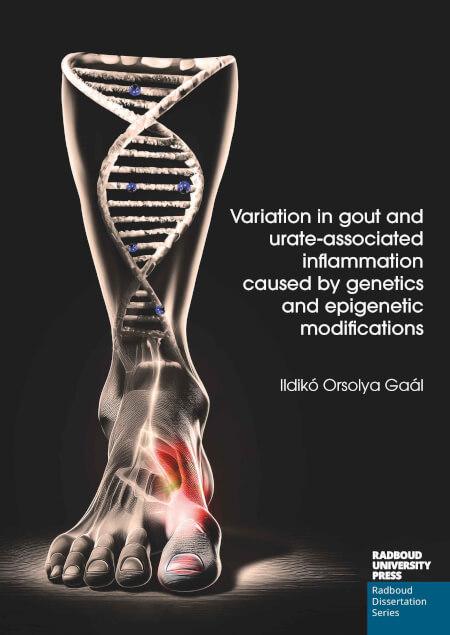Variation in gout and urate-associated inflammation caused by genetics and epigenetic modifications
Keywords:
gout, hyperuricemia, inflammation, genetics, SNP, PBMCsSynopsis
Gout is a common autoinflammatory disease caused by MSU crystals, leading to acute or chronic joint inflammation. It begins with hyperuricemia, where elevated serum urate levels increase the risk of gout. Hyperuricemia results from overproduction or reduced excretion of urate. Innate immune cells, especially macrophages and monocytes, detect MSU crystals, activating the NLRP3 inflammasome and inducing IL-1β production, triggering inflammation. Treatment follows a "treat to target" strategy with urate-lowering therapy.
Recent studies suggest hyperuricemia induces trained immunity, where innate immune cells "remember" prior exposure and respond more aggressively upon re-exposure. This involves epigenetic and metabolic reprogramming, contributing to chronic inflammation in gout and hyperuricemia. Genetic factors also influence serum urate levels and inflammation. GWAS studies highlight the IL1RN-IL1F10 region’s role, showing IL1RN rs9973741 is linked to reduced IL-1Ra production and increased IL-1β secretion.
IGF1R, associated with serum urate and gout, does not significantly impact urate-induced inflammation. IL1R1 was investigated but showed no direct link to inflammatory responses. Proteomic studies revealed a pro-inflammatory signature in hyperuricemia, reversible with urate-lowering therapy. Epigenetic analyses suggest histone modifications and DNA methylation contribute to persistent inflammation. Lastly, trained immunity plays a role in various rheumatic diseases, linking innate immunity to chronic inflammation.

Published
Series
Categories
License

This work is licensed under a Creative Commons Attribution-NonCommercial-NoDerivatives 4.0 International License.

